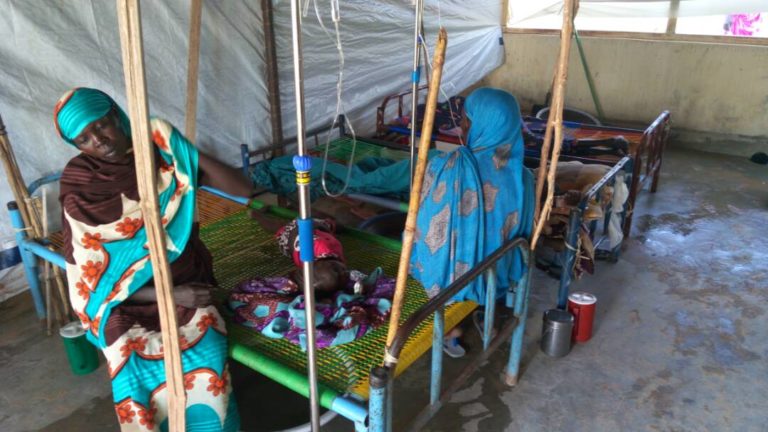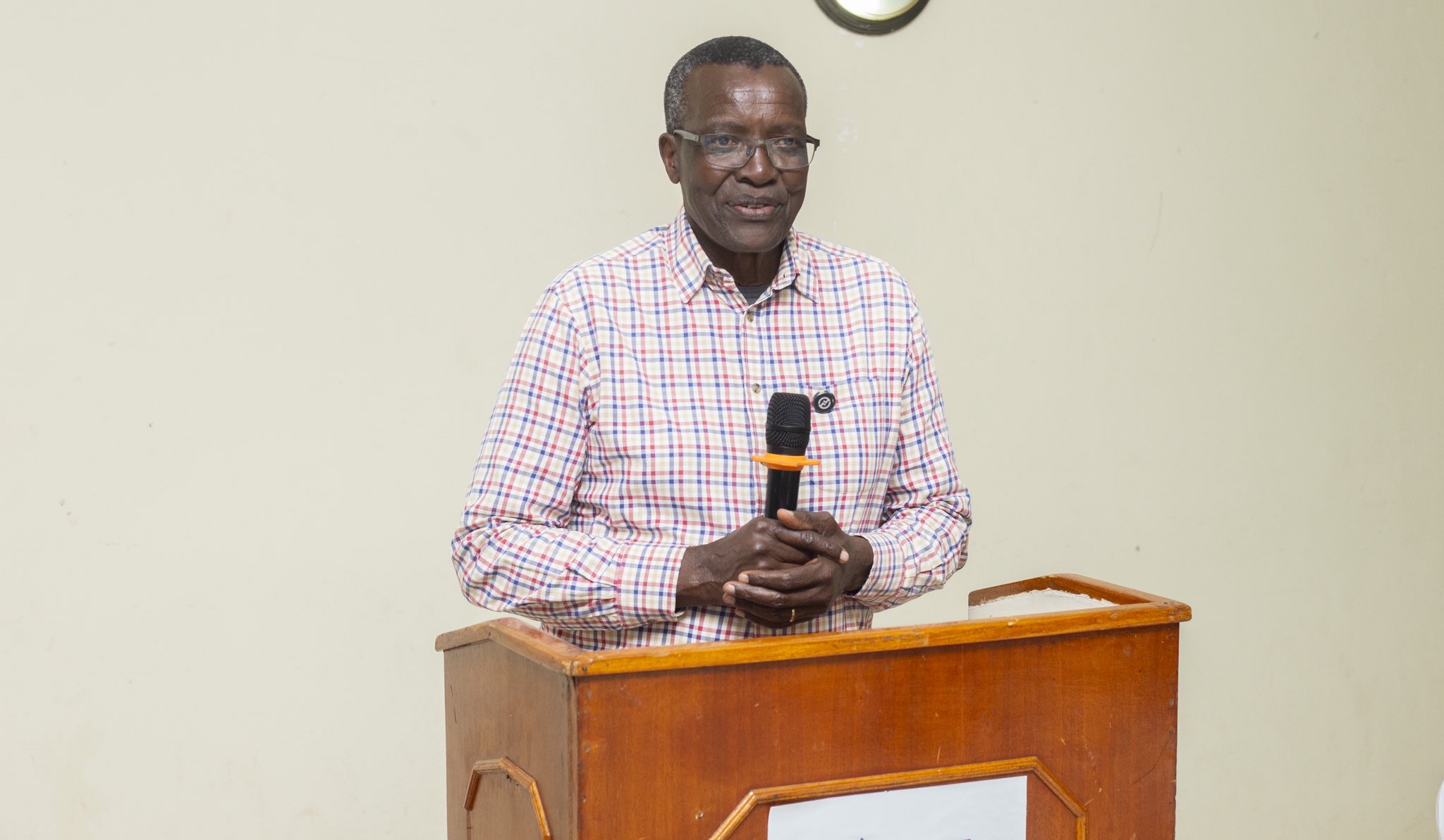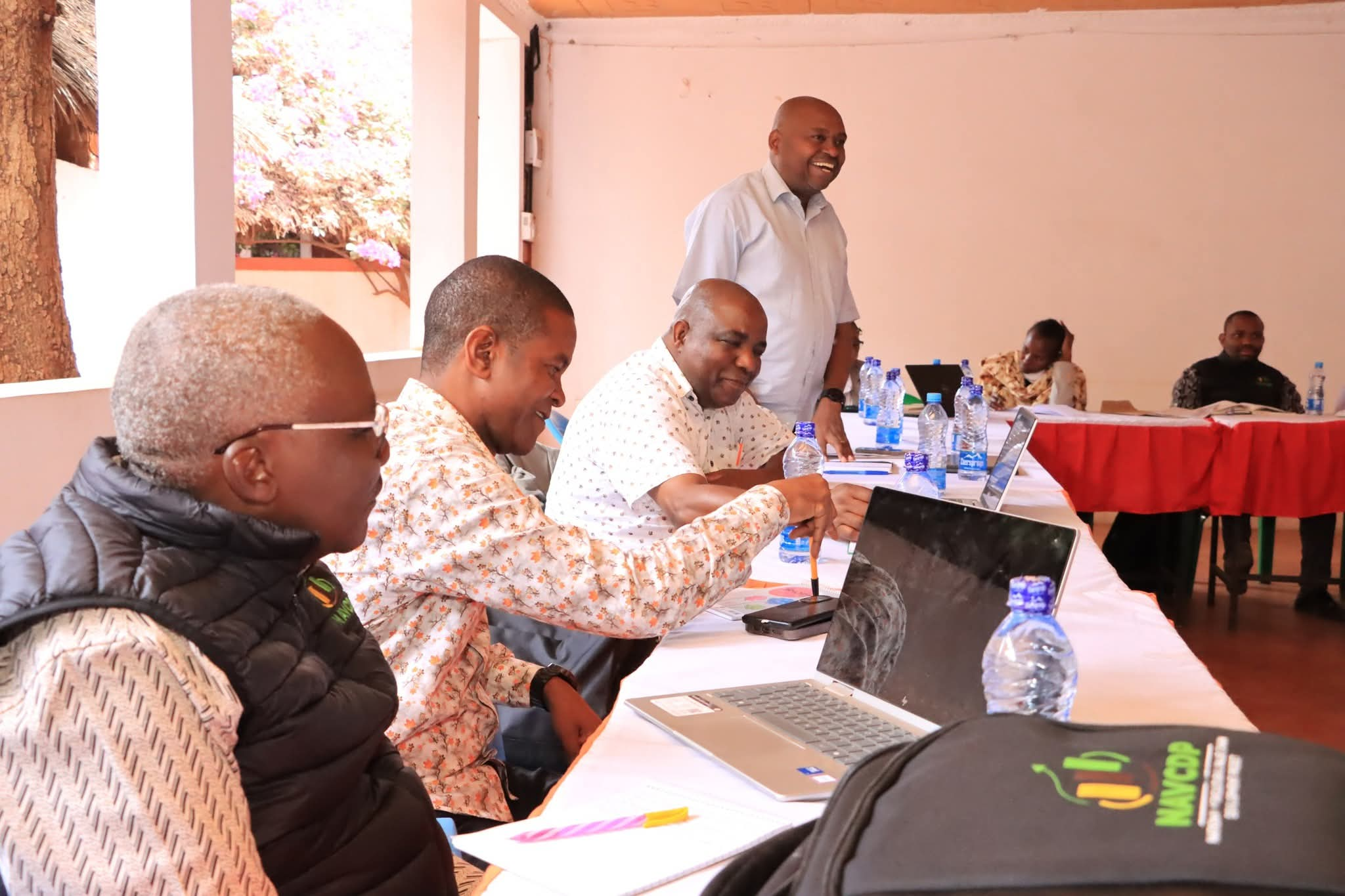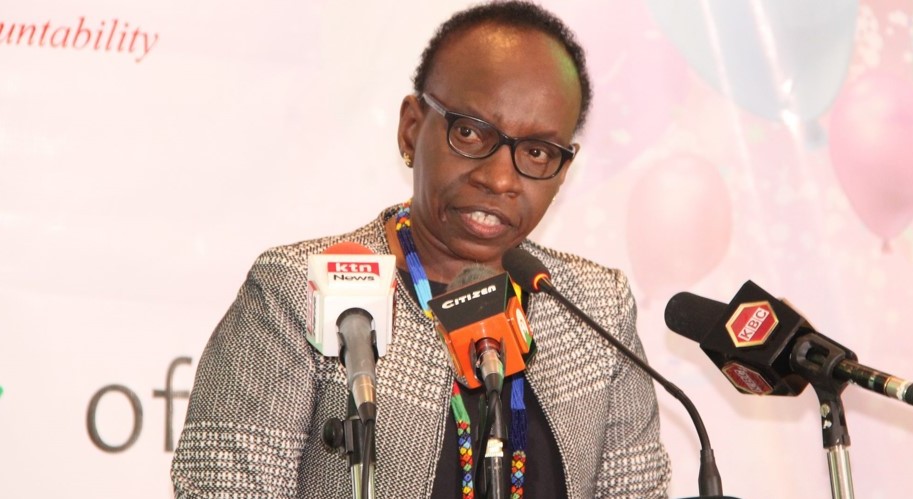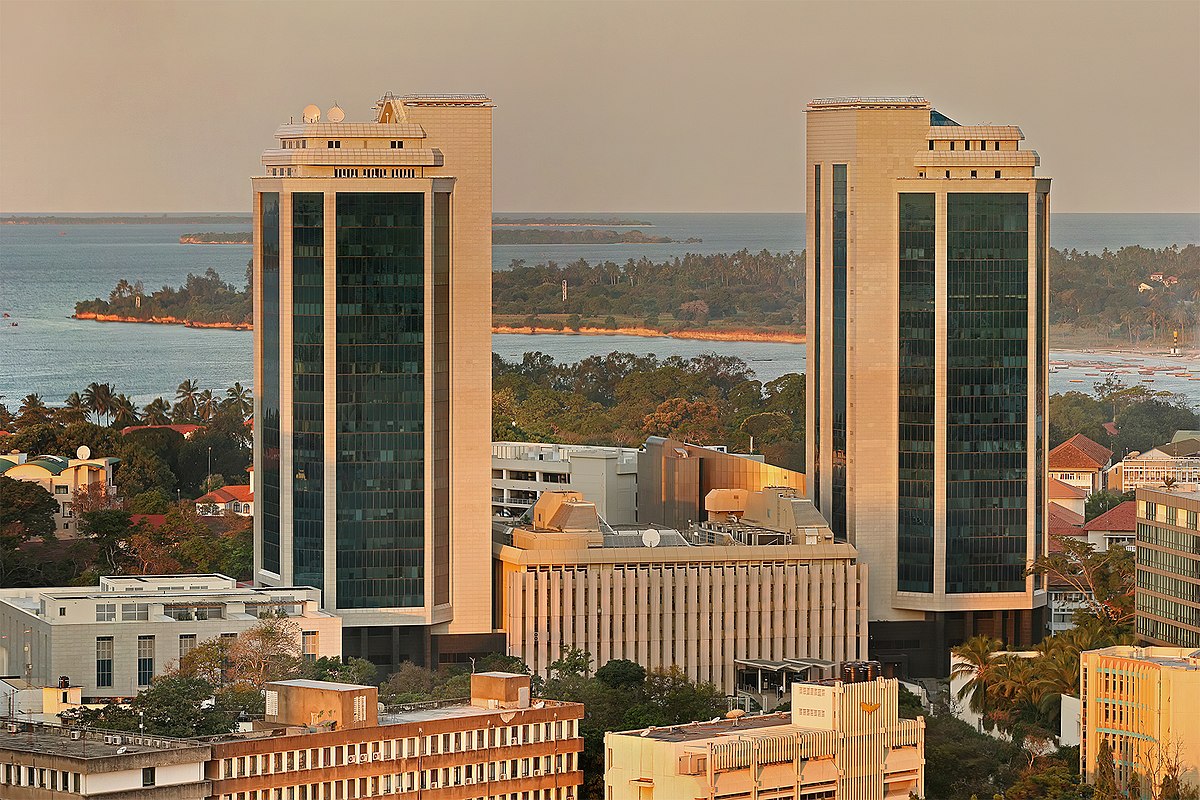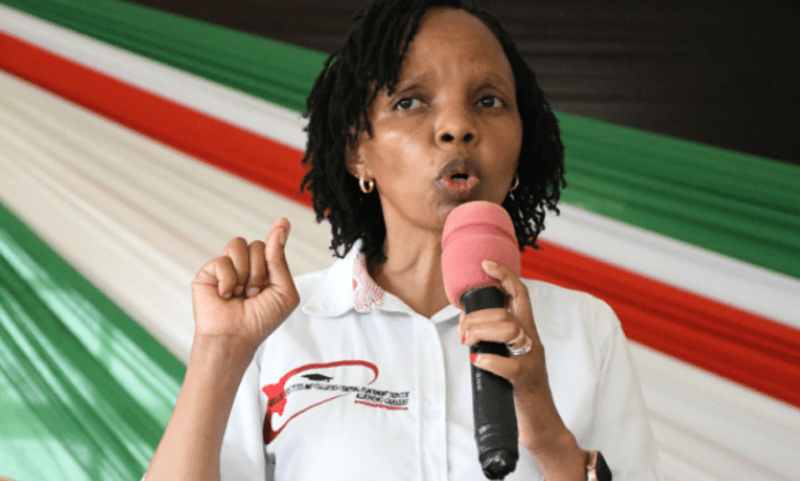Churches in Kenya defy economic trends, record rise in tithes and offerings
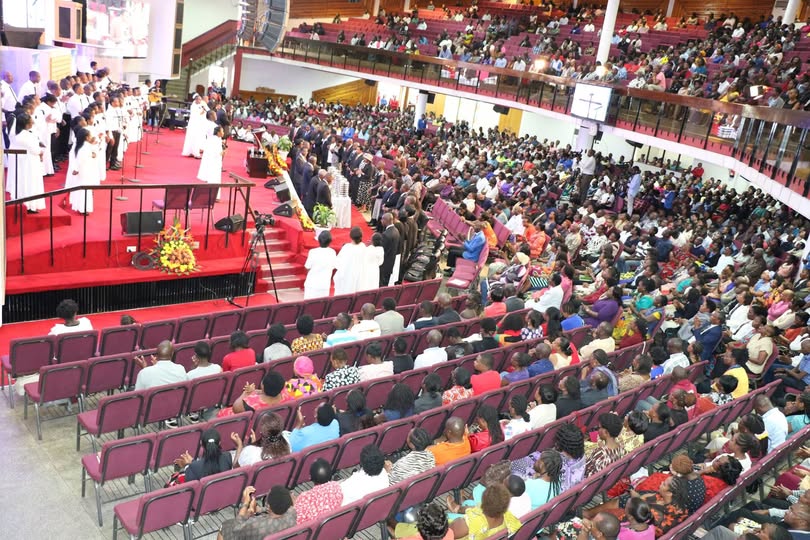
Citam's collections from tithes and offerings increased from Sh1.9 billion in 2022 to Sh2.2 billion in 2023.
For many Kenyans, giving to the church is not about what they have, but what they hope for. Even as daily life becomes more expensive and incomes shrink, some churchgoers are still offering what little they have, driven by the belief that their faith will carry them through.
One such story is told in the 2024 annual report by Karura Community Chapel, as reported by the Daily Nation.
More To Read
- Inside President Ruto's five-day tour of Mt Kenya
- The politics of donations: Why Ruto’s church gifts are meeting resistance
- Defiant Ruto gives Eldoret church Sh20m donation as youths protest in Nairobi
- Jesus Winner Ministry Church defends Ruto's Sh20 million "pledge" amid calls for return
- "We’ll take the money elsewhere", Ruto allies slam clerics over donation rejection
- Senators reject Ruto Bill to regulate harambees
A congregant, whose name is not disclosed, found herself in deep emotional and financial distress. In her lowest moments, she still made a choice to give.
She shared that in June, she was suicidal as everything in her life seemed to be falling apart. By July, things had worsened, and she had hit rock bottom. Despite this, she remained consistent in prayer, holding onto hope for change. After the seventh week of prayer, as the month ended, she had very little left. She gave her last M-Pesa as an offering and went home.
“However, between the 1st and 5th of August, her business experienced a sudden surge in sales, allowing her to settle all her bills. Though she acknowledged that she was not yet where she wanted to be, she continued to trust God. She had learnt to surrender fully to Him, understanding that letting go means not worrying about what has been entrusted to Him, as He is always faithful,” the report reads.
Her story reflects a broader trend seen in several churches across Kenya. Financial statements from churches such as Nairobi Chapel, Christ is the Answer Ministries (Citam), All Saints’ Cathedral, and Karura Community Chapel show an increase in tithes and offerings between 2022 and 2024 despite economic challenges facing many households.
At Nairobi Chapel, which operates 33 branches countrywide, tithes and offerings rose from Sh551.1 million in 2022 to Sh641.3 million in 2023. This represents an increase of Sh90.2 million, according to a report presented during its 2024 annual general meeting.
Citam also recorded growth in its giving. Its collections from tithes and offerings increased from Sh1.9 billion in 2022 to Sh2.2 billion in 2023.
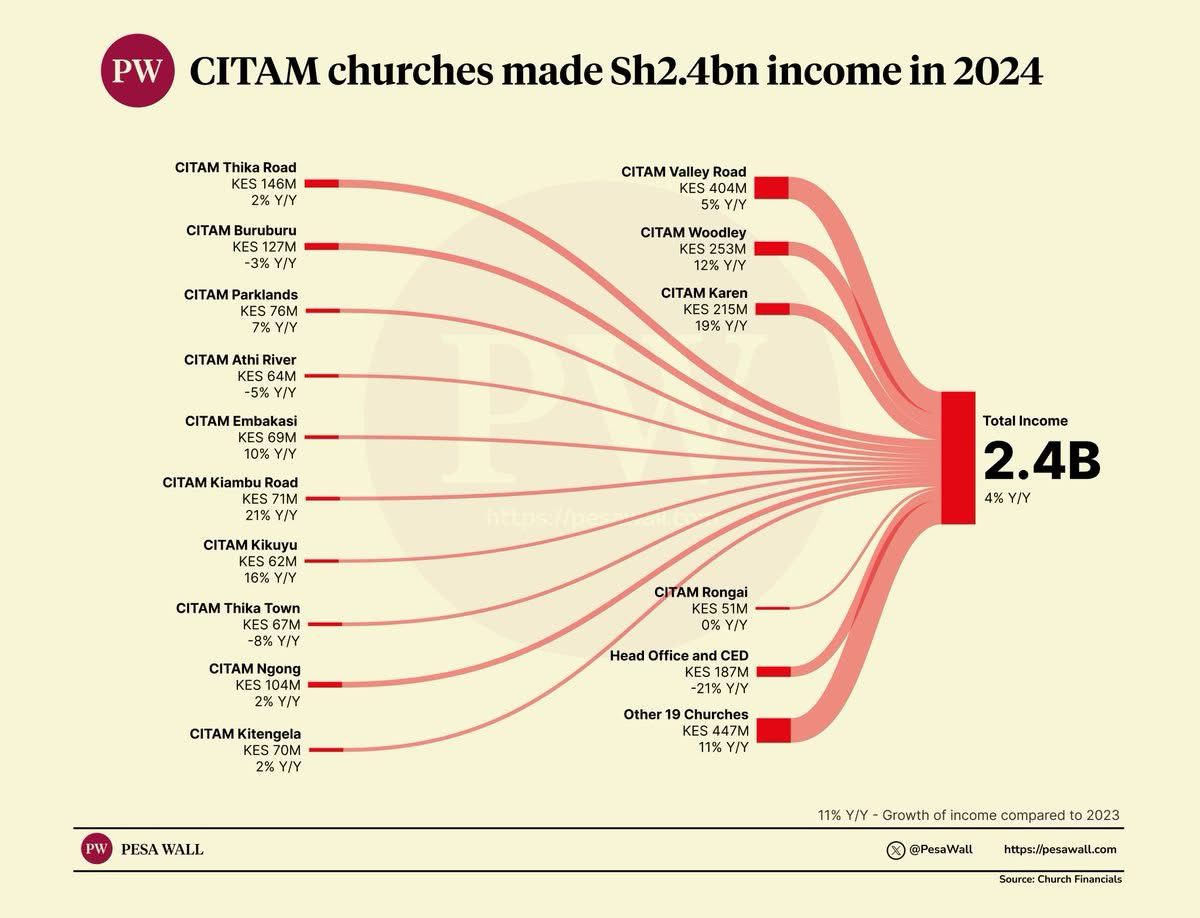
The church has 33 assemblies, including one in the USA and another in Romania. Of all the branches, the Valley Road assembly brought in the highest tithes and offerings in both years.
In 2023, Valley Road reported Sh382.2 million in income from different sources, followed by the Woodley and Karen assemblies.
At All Saints’ Cathedral in Nairobi, collections increased slightly from Sh193 million in 2023 to Sh196.1 million in 2024. Karura Community Chapel also experienced a rise in giving, with tithes and offerings moving from Sh125.4 million in 2023 to Sh129.4 million in 2024.
Its total income grew from Sh215.8 million to Sh222.3 million.
Retired Presbyterian cleric Timothy Njoya warned against turning generosity into gain for church leaders.
“Church offerings are used for luxuries – supporting workshops and seminars, holidays and all that – for clerics. That’s exploitation,” Rev Njoya told Nation.
He said the right use of church income is to support regular operations, such as paying electricity bills and staff salaries. He also disagreed with the idea of giving in return for blessings.
“That is corruption,” he said, responding to Prof Iraki’s view. “God gives irrespective of whether He is given a tithe or not. We are God’s creation. We live by God’s grace.”
Rev Njoya added that people should not be pressured to give when they are unable to meet their own needs.
“It would be oppressive to pressure them (Christians) to give if what they have does not meet their own subsistence needs. You don’t give 10 per cent of something that you cannot live on,” he said.
On whether tithes should reduce in line with income, Rev Njoya said if someone’s earnings drop from Sh50,000 to Sh45,000, then their tithe should also change from Sh5,000 to Sh4,500.
In many churches, sermons are often used to remind people about giving. Some services assign specific people to lead offering moments.
Payment methods have also shifted, with more people giving via M-Pesa, card swiping, and other digital means.
While the Kenya National Bureau of Statistics shows GDP growth slowed to 4.8 per cent in 2022, then improved to 5.6 per cent in 2023, it’s expected to slow again to 4.6 per cent in 2024. The World Bank attributes this to mid-2024 protests and reduced public spending.
Top Stories Today








